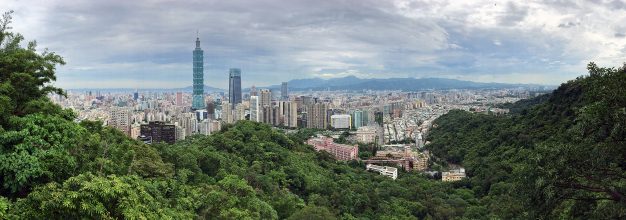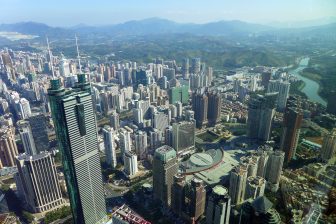
Making cities work for every urban-dweller
It’s the urban age for people – and for other species too – so it’s time to start planning for all the plants and animals that call our cities home.
The urban age is upon us, with 4.2 billion people (55 per cent of the global population) now living in cities. Some argue urbanisation is inevitably leading to humans disconnecting from nature and failing to see the environmental destruction at the heart of the Anthropocene (the current geological age, characterised by the dominance of human activity). So how do we arrest this process, and start sharing our planet more effectively with the millions of other species that live here?

Planning for the more-than-human
One way is to plan urban spaces with other species in mind – that is, plan to conserve biodiversity in our cities. Historically, people have chosen to settle in productive landscapes that support high levels of biodiversity. Human population density correlates with biodiversity even today, including many rare and threatened species that share their habitats with us.
In Australia, for example, 376 federally-listed threatened species (or around 30 per cent) occur in cities. As urban areas expand worldwide, more species will need to contend with highly altered environments. However, professional urban planners and decision-makers mostly plan for one species only: Homo sapiens. When decision-makers do consider other species, they tend to focus on the benefits urban-dwelling people derive from a closer connection to nature.
But human residents in cities often respond positively to biodiversity restoration programs and other activities that focus on the needs of the more-than-human. Ambitious projects like the High Line and Brooklyn Bridge Park in New York and the restoration of Cheonggeycheon Stream in Seoul have captured the public imagination, attracting tens of thousands of local and international visitors annually while improving amenity, increasing local biodiversity and providing valuable ecosystem services.

Importantly, such projects have also been an economic success, revitalising neighbourhoods and driving increases in property prices.
To see more initiatives like these, planners need to undergo a philosophical shift – facilitated by empathy with other species and the sharing of a common language with ecologists.
But how can planners acquire these skills? Should they resort to living underground and finding their inner badger as the naturalist Charles Foster did in 2016?
To plan for the motorbike frog you don’t need to live like a frog (or even own a motorbike)
A more plausible option is to recognise that planners already have the tools – developed through more than 100 years of social science – to consider and plan for biodiversity.
In a recent paper published in the major journal Cities, we present seven principles of planning for biodiversity in the city.

The seven principles (or lamps) of planning for biodiversity in the city are:
- protection of remaining ecological assets and habitats;
- connectivity of biological populations and habitats;
- construction of diverse and complex habitats to attract or retain biodiversity;
- cycles that mimic natural flows;
- interactions within and between ecosystem elements;
- benevolence of urban infrastructure to reduce negative impacts on biodiversity; and
- novelty of urban ecosystems and ecological communities.
Practical ways to turn on these lamps include:
- designing to preserve features of high biodiversity (like areas of remnant vegetation, wetlands, rocky outcrops or larger green spaces like parks and golf courses);
- protecting natural drainage lines (particularly the upper reaches of streams that only carry water occasionally);
- taking advantage of urban turnover (the continuous process of knocking down existing buildings to make way for new ones);
- using temporary or neglected spaces (like pop-up parks or disused industrial sites); and
- applying both incentive schemes and regulatory approaches to limit the loss of habitat and encourage restoration in urban landscapes.
For example, the biodiversity of remnant habitat boundaries (where ‘nature’ and the larger urban environment meet) can be supported with buffer plantings of native vegetation to reduce weed invasion, and sloping roads and pavements to guard against stormwater runoff carrying weeds and nutrient pollution.
Using rainwater runoff from roofs and pavements to irrigate green spaces in cities is another relatively simple way to boost biodiversity. This approach also supports urban cooling through greater evapotranspiration, and helps to mitigate floods.
Urban green spaces can also be managed to better support biodiversity: for example, by altering the frequency and timing of mowing, and retaining (instead of removing) under-storey vegetation, we can make fallen branches and leaves important habitats for ground-dwelling fauna.

Existing urban sustainability-rating systems could be updated to increase their emphasis on biodiversity conservation across a range of scales.
Preservation of existing, biodiverse features in urban and peri-urban areas is also important but requires strong regulation, as there are many powerful interest groups that could benefit from the conversion of these features into housing or industrial estates. The need for regulation is particularly urgent where there are cumulative impacts of multiple, small-scale losses.
To realise these opportunities, we need to better integrate planning and ecology in university curricula. For example, we should include ecologists in the studios of planners and designers, and bring planners and designers into ecology classes. Ecologists should also be included in multidisciplinary planning and design teams, to ensure that biodiversity is considered from the beginning of a project, rather than as an afterthought.
Strengthening the common ground between ecologists and planners will help us create cities that are better for people – and for biodiversity too.
Feature image: CC Flickr/ JordanEightySeven
This article was first published on Pursuit. Read the original article.




